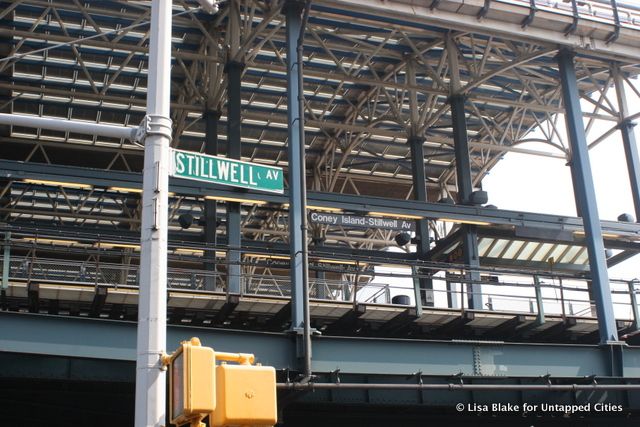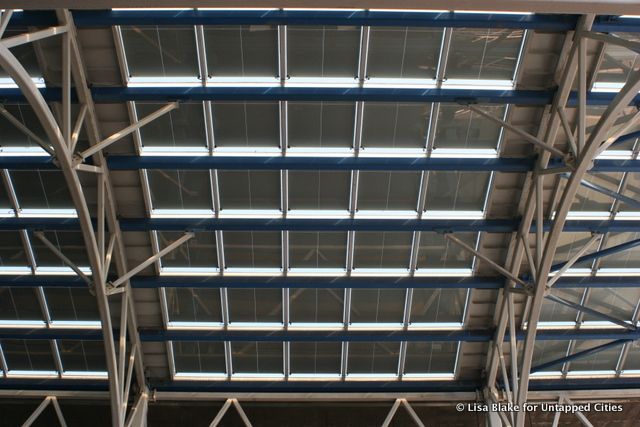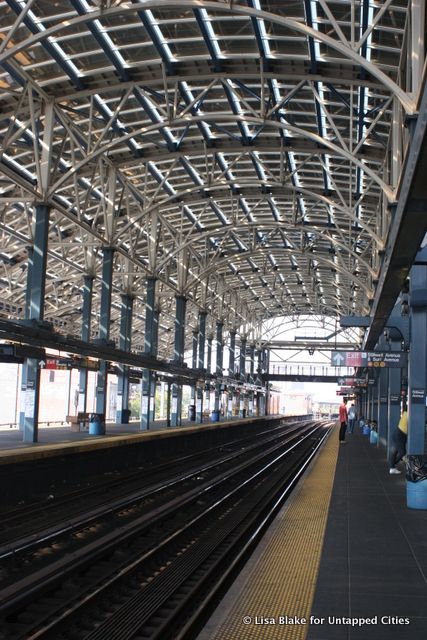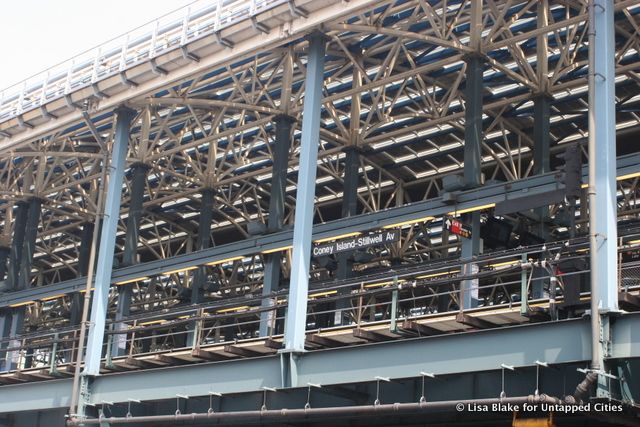Last Chance to Catch NYC's Holiday Notalgia Train
We met the voices of the NYC subway on our nostalgia ride this weekend!



Next time you’re on your way to Coney Island, before you hurry out of the Stillwell Avenue Station and exit the turnstile, look up at the roof you are standing under. The Stillwell Avenue Terminal Train Shed, completed in May 2004, is covered with 2,730 identical solar panels! Together, these solar panels produce between 220,000 to 250,000 kilowatts of clean solar energy hours per year or 10-15% of the terminal’s annual energy usage.
Produced by a German manufacturer, the custom solar panels are approximately 5 square feet, 5% transparent, and triple-laminated for durability. They are also designed to be surrounded by clear glass to ensure that enough sunlight can still reach the train platform.

We attended a tour of the Stillwell Avenue Terminal Train Shed organized by GreenHomeNYC and given by Tony Daniels, one of the architects of record for the project, to learn more about this project and the challenges the team faced during the project’s design and construction phase.

The first challenge was durability. Daniels explained, “it’s innovative but for NYC transit, its got to be tough,” a fact which lead facility planners and project managers to use a 35-year term in their design. Given the project’s location in a Hurricane Zone, the project was designed to strict codes and standards, such as the Miami-Dade County hurricane protocols for solar glazing. Additionally, the panels were tested by a laboratory in York, PA which fired projectiles out of a cannon at the panels to test the panel’s resistance. The panels are also designed to require minimal maintenance but should replacement ever be necessary, a catwalk system is in place.

At the time of construction, another obstacle was negotiating with Con Edison who was not required to allow net metering and treated the project as a small power generating facility. Back in 2002, this project was a bit avant-garde, and Con Edison was concerned that if power fed back into the grid, it could damage it. This explains, in part, why the facility was actually designed to ensure that the power produced by the solar panels did not exceed the net total power used by the facility. This design ensured that there was only a small risk of feeding power back into the grid.
Cost was another challenge. As Daniels explained, the facility, “had to be maintainable, it [had] to be replaceable [and it had] to be simple.” And although the design team, “cut detailing down to its bare essence,” and made the project as simple as possible, the project was still a, “tremendously customized application,” which drove up costs. While there is no analysis available for the estimated payback by the end of its 35 year term due to multiple externalities, the project will pay back its initial investment and save the transit system money.
While critics for the project certainly exist, citing both cost and the project’s actual power generation, the Stillwell Avenue Terminal Train Shed was still a trail-blazing project; it contributed to the greater conversation of renewable energy and helped clear the way for other solar projects throughout NYC.
And finally, the design is notable because it uses low voltage to deter pigeons from roosting up above– who knew?Subscribe to our newsletter